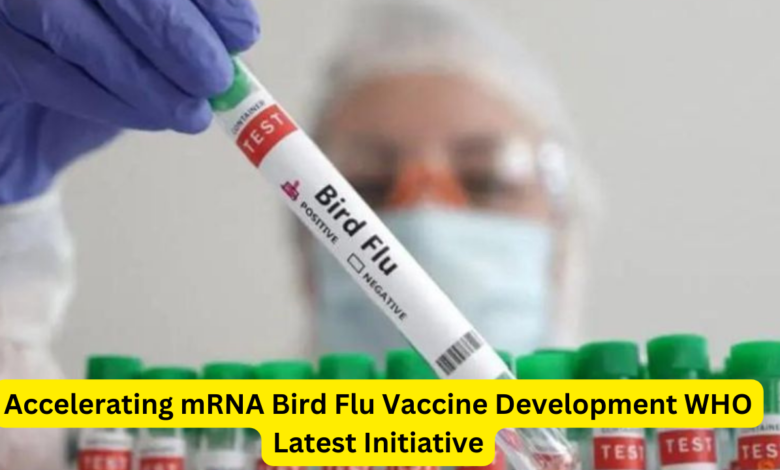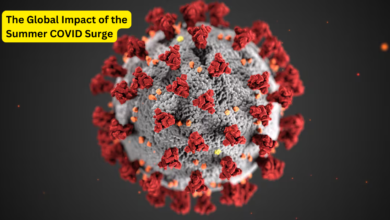Accelerating mRNA Bird Flu Vaccine Development WHO Latest Initiative

Accelerating mRNA Bird Flu Vaccine Development WHO Latest Initiative, In a groundbreaking move, the World Health Organization (WHO) has launched a new project aimed at accelerating the development of mRNA bird flu vaccines in poorer countries. This initiative, announced on July 29, 2024, marks a significant step forward in the fight against avian influenza and aims to make vaccines more accessible to vulnerable populations worldwide. The use of messenger RNA (mRNA) technology promises to revolutionize vaccine development, offering faster and more efficient ways to combat this deadly virus.
What is Bird Flu?
Bird flu, also known as avian influenza, is an infectious type of influenza that spreads among bird species. In rare cases, it can infect humans, leading to severe respiratory illness and, in some cases, death. The most well-known strain is H5N1, but other strains like H7N9 and H5N6 have also caused human infections. The virus poses a significant threat due to its potential to mutate and cause a pandemic.
The Need for a Bird Flu Vaccine
Bird flu outbreaks have occurred sporadically over the years, with devastating effects on poultry industries and occasional human fatalities. The primary concern is the virus’s ability to mutate and potentially lead to a pandemic. A robust bird flu vaccine could save countless lives and prevent economic losses. However, traditional vaccine development methods are slow and often unable to keep up with the virus’s rapid evolution.
The Promise of mRNA Technology
mRNA technology has emerged as a game-changer in the field of vaccine development. Unlike traditional vaccines, which use weakened or inactivated viruses to stimulate an immune response, mRNA vaccines use a small piece of the virus’s genetic code to instruct cells to produce a protein that triggers an immune response. This method is faster, more flexible, and can be adapted quickly to address new virus strains.
WHO’s New Initiative
The WHO’s new project focuses on leveraging mRNA technology to develop bird flu vaccines more rapidly and efficiently. By prioritizing development in poorer countries, the WHO aims to ensure that these vaccines are accessible to those who need them most. This initiative includes:
1. Investment in Research and Development
The WHO is allocating significant resources to fund research and development of mRNA bird flu vaccines. This includes collaborations with biotech companies, research institutions, and governments to accelerate the creation of effective vaccines.
2. Building Infrastructure
Developing and distributing mRNA vaccines requires specialized infrastructure. The WHO is working to build and upgrade facilities in poorer countries to enable local production and distribution of these vaccines.
3. Training and Education
To ensure the successful implementation of mRNA technology, the WHO is providing training and education to healthcare workers and scientists in developing countries. This will help build local expertise and ensure the sustainability of vaccine production and distribution.
4. Regulatory Support
Navigating the regulatory landscape can be a significant barrier to vaccine development. The WHO is working with local and international regulatory bodies to streamline the approval process for mRNA bird flu vaccines, ensuring they reach the market as quickly as possible.
Benefits of mRNA Bird Flu Vaccines
The use of mRNA technology in bird flu vaccines offers several key advantages:
1. Speed of Development
mRNA vaccines can be developed much faster than traditional vaccines. This speed is crucial in responding to rapidly spreading viruses and emerging strains.
2. Flexibility
mRNA technology is highly adaptable. If the bird flu virus mutates, the vaccine can be quickly modified to target the new strain, ensuring continued protection.
3. Efficacy
Clinical trials have shown that mRNA vaccines can elicit strong immune responses, providing effective protection against infections.
4. Safety
mRNA vaccines do not use live virus particles, reducing the risk of causing disease in recipients. They have been shown to have favorable safety profiles in various studies.
Challenges and Solutions
While the promise of mRNA bird flu vaccines is significant, there are challenges to overcome:
1. Cold Chain Requirements
mRNA vaccines often require ultra-cold storage, posing logistical challenges, especially in poorer countries. The WHO is exploring innovative solutions to maintain the cold chain, such as portable freezers and advanced refrigeration technologies.
2. Cost
The production and distribution of mRNA vaccines can be expensive. The WHO is working to secure funding and reduce costs through economies of scale and local manufacturing.
3. Public Acceptance
Public skepticism and misinformation about vaccines can hinder vaccination efforts. The WHO is conducting awareness campaigns to educate the public about the safety and efficacy of mRNA bird flu vaccines.
Conclusion
The WHO’s initiative to accelerate the development of mRNA bird flu vaccines represents a significant step forward in global health. By leveraging cutting-edge technology and prioritizing development in poorer countries, this project aims to make life-saving vaccines accessible to all. The promise of mRNA technology, with its speed, flexibility, efficacy, and safety, offers a powerful tool in the fight against avian influenza. As the world faces ongoing threats from emerging infectious diseases, the development of effective vaccines is more critical than ever.



